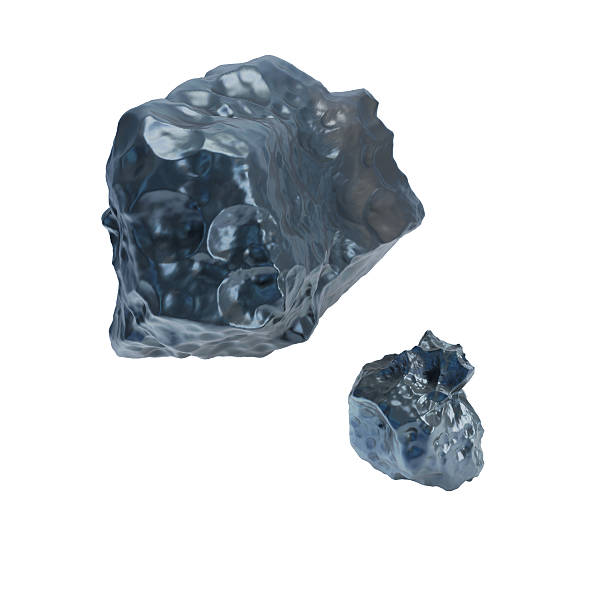Biochemists were able to reveal how RNA, a molecule capable of evolution, is formed from ordinary organic substances on volcanic glass. This process could occur on Mars and on Earth. Perhaps that’s how life came to be.

RNA spontaneously forms on volcanic glass
Scientists from the Foundation for Applied Molecular Evolution announced that they were able to reproduce the process of formation of ribonucleic acids (RNA) on glass, which was formed from basalt lava. This process was common on Mars and on Earth 4.35 billion years ago.
According to researchers on both planets, during this time there were a lot of nucleic triphosphates — organic substances from which blocks of organic polymers can be formed. The sulfur dioxide present in the planet’s atmosphere could help in their stabilization. There was also water in different aggregate states. Only iron-nickel meteorites that crashed into basalt glass covered with a layer of hydrocarbons is enough to start the desired reaction.
In the conditions of molten basalt, nickel acts as a catalyst for the formation of sufficiently long RNA chains. Their length could be 100-200 nucleotides. Then their evolution could begin in the water droplets. If it occurred on Mars, then we will be able to detect its traces not only in sedimentary rocks, but also in volcanic ones. On the red planet, unlike Earth, even the most ancient of them.

How do life begin?
The new discovery could be a key link in the question of how life in the Universe arises. Over the past decades, incredible progress has been made in solving the question of how living cells are formed from inorganic molecules.
On the one hand, a lot of organic substances were discovered in space and it became clear that there was no shortage of phosphate-containing organic matter on Earth from the very beginning of its existence. It can be formed without the participation of living beings.
On the other hand, it became clear that the cell is not the simplest unit of life. RNA molecules can be evolved and in the process of evolution create DNA and proteins. The only problem was to assemble a sufficiently long RNA from individual nucleotides. Until now, they have tried to do this with the help of complex multicomponent reactions.
How ordinary is life
The new variant of RNA synthesis with volcanic glass and nickel is so simple that it can even be shown in school lessons. Therefore, it is the best candidate for explaining how life originated on Earth.
It should be noted that the proposed path does not solve absolutely all issues related to the process of the origin of life. For example, the chirality of RNA remains unexplained. All their molecules on Earth are twisted in the same direction, and this creates the conditions for the emergence of the biochemistry that we know.

However, the newly discovered reaction is so simple that it could occur not only on Earth. Basalt, water, organic matter and nickel are a fairly common combination. And RNA could have originated on millions of planets in our Galaxy. But whether entire biospheres have grown out of all of them, we will be able to find out only by space exploration.
Therefore, Mars becomes extremely important. The RNA may well remain in its volcanic glass. And even if we don’t find a remnant of living cells in sedimentary rocks, there remains a chance to see at what stage the evolution of organic molecules froze there and understand why this happened.
According to hys.org
Follow us on Twitter to get the most interesting space news in time
https://twitter.com/ust_magazine

